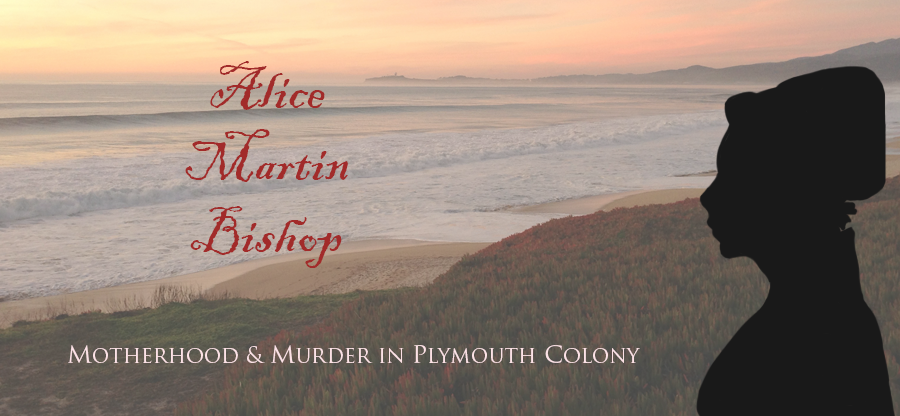Erin Taylor & Kristin Luce, November 2015
Both England and the colonies followed the rule that no one should be punished for something beyond his comprehension and control. Without moral culpability, there could be no criminal liability. (McManus 105)
It’s easy to make Alice Martin Bishop (AMB) mentally ill. To insist she had postpartum depression, to assume she had to be psychotic. To make her a seventeenth-century Andrea Yates. Because the alternative is to imagine she is a cold-hearted, murdering mother. And for those of us who claim AMB in our family tree, that’s a real downer.
Records of mental illness among seventeenth-century colonists were not kept, but references to people who were perceived as mentally or emotionally unbalanced appear occasionally in colonial records and other contemporary papers. Terms such as “mad,” “idiot,” “deluded,” and “distracted” were used to describe people whom we would probably consider as having attributes of a mental illness or intellectual disability (Eldridge, 362).
In her book, A Disability History of the United States, Kim Nielsen suggests that, in colonial America, few adults would have been labeled with a disability or mentally ill as long as they could do the work they were tasked to do — cutting wood, churning butter, delivering sermons, and so on. So, when we’re looking for evidence that AMB may have been mentally ill, we’re not likely to find it because she still maintained her wifely and maternal roles. The trial records make no mention of her emotional or mental state (save the “sad and dumpish” comment by Rachel Ramsden), but why would they? The jurors believed Alice had knowingly, with intent, murdered Martha — and, indeed, she admitted to doing so.
